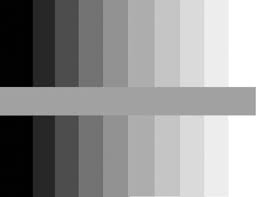100's of Watercolour tips, & techniques
Over the last 30 years I have accumulated and constantly searched for knowledge to improve my painting, originally with books, and teachers now with the internet.
Those wonderful ‘Aha Moments’ when the penny drops and you discover something that really makes sense and lodges in your brain forever.
On this page I will regurgitate as much of that information as I can and keep adding the things I find.
Not in any particular order….
Learn to SQUINT
One of the most useful tricks i ever learnt, so simple and yet so effective. It simplifies the subject, one of the most difficult aspects of painting plein air is the overwhelming amount of detail before you. Simply by squinting we reduce that detail and turn our view into simple shapes, reducing the amount of detail of tone and colour.


TONE FIRST , COLOUR SECOND!
Tone/Value does the work but colour takes the credit! It took a long time for me to take this on board, I always skipped the pages that said practise monochrome studies first. That was a mistake, practise tone, print a tonal value scale and compare what you see with the value of your sketch/ painting. The most common mistake by amateur painters is their use of tone, their darks need to be darker.
Masking Fluid
- Apply thickly.
- Dip brush in soapy water before dipping in masking fluid
- Also called liquid frisket
- Some brands mask is slightly coloured so it easy to see where its applied.
- Dont leave in the sun when its been applied to paper.
- Dont leave on paper for too many days.
- Should smell of ammonia if not too out of date.
- Only use old brushes.
- Dont shake the bottle.

Brushes
- Use the biggest brushes you can allowing you to fill the space comfortably but as quickly as possible. Don’t dab!
- Use good quality brushes with good points otherwise it is impossible to control accurately the area of paper you are filling.
- Don’t leave them standing in water – you will ruin the brush!
- Clean the brushes and allow to dry!
- Tim Willmot recommends synthetic brushes by Raphael and Escoda as being just as good as expensive sable!
Paper
Use good paper, it keeps longer and absorbs the paint diferently.
- The most famous quality papers being Arches from France, Saunders and Waterford from the U.K. and Fabriano from Italy.
- Learn to stretch your paper, when you are a master you can can paint quickly with single washes and many of the masters just tape it to the board with masking tape. I try to make it as easy as possible, stretching is simple.
- Paper is measured by weight in lbs or grams 1lb = 1.48gsm
- the most common weight used by professionals is 140lb or 300gsm.
- There are 3 surfaces
- Hot pressed watercolour paper – smooth
- Cold pressed watercolour paper – mid textured – most common
- Rough watercolour paper – Rough!

